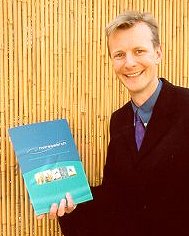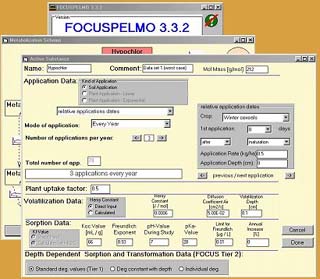The chemical industry is faced with an interminable job in putting its products through environmental risk assessment, safety testing and other reviews. Indeed, the British Government demands that chemicals undergo a rigorous testing programme, including an ‘environmental risk assessment’, before it is satisfied a substance is safe. Once a material has full marks it will then be granted a sales licence for the UK and Europe.
However, the regulations date back to 1981 and there is now a massive backlog of tens of thousands of chemicals which require checking. A new spin out company from Newcastle University hopes to help solve the backlog problem in the chemicals industry. Enviresearch is using computer models to determine whether chemicals are environmentally friendly.

James Garratt
The models use known relationships between chemical properties and environmental behaviour, explains Enviresearch company director James Garratt of the School of Biology. They work by bringing together all available information about the chemical properties to predict where the chemical will go and what effect it will have. He adds that risk assessments can be done much more quickly and cheaply on the computer than using time-consuming laboratory tests.
Computer modelling provides results in several days, as opposed to the several weeks needed for laboratory tests to be completed. In many cases, sufficient data have already been produced, and all that is needed is the right analysis, says Garratt. We are currently able to test a wide range of chemicals, including pesticides, paints, detergents and wood preservatives for our clients using a wide range of mathematical models.

PELMO screenshot
The models with bizarre names such as TOXSWA, TOXic substances in Surface Waters, PELMO, Pesticide Leaching MOdel and EUSES, European Union System for the Evaluation of Substances, carry out a detailed analysis of information about a particular chemical and predict what would happen if that substance were to enter the environment through the soil or water body.
The model might, for instance, reveal a substance to be benign or in the worst case scenario to show that it is harmful to birds and fish or otherwise seriously damaging to an ecosystem. The predicted concentrations of the chemical in the environment are compared to the toxicity, adds Garratt. If the first concentration is higher than the second, then alarm bells start to ring.
There are many variables to consider in running a model for risk assessment. The acidity of the soil, for instance, can alter the risk associated with a particular pesticide and whether or not that compound would be likely to contaminate the water supply. If a compound is volatile, then the concentration in soil or water might fall quickly, but pollution of the air will increase.
Enviresearch’s main client groups using these services are in the agrochemical industry and the chemical testing industry. There is increasing interest from the chemical industry, especially from the smaller, speciality chemical companies.
Another issue that is beginning to have an impact on these companies is the EU Chemicals Policy Review. The EU issued a White Paper in 2001 proposing that all chemicals placed on the market are registered and their risks in use evaluated with an authorisation procedure for chemicals of very high concern. The aim of the Review will be a new and comprehensive testing program for chemicals with the aim of protecting human health and the environment. However, according to the UK’s Chemical Industries Association, with trades union backing and support from the Confederation of British Industry, the new attitude to chemicals testing could be very harmful to the British chemical industry and especially to small to medium enterprises (SMEs).
Enviresearch believes that modelling can provide a cost- effective solution to many of the regulatory problems facing SMEs, Garratt says. One aspect in particular that greatly concerns the chemical industry as a whole and the animal rights movement is that the new testing policy will lead to a massive increase in the numbers of animals used in testing programs. Again, modelling can optimise the use of existing data and restrict the number of animal experiments that need to be performed, adds Garratt.
Further reading
Enviresearch
http://www.enviresearch.com/
TOXSWA
http://eco.wiz.uni-kassel.de/model_db/mdb/toxswa.html
PELMO
http://www.wiz.uni-kassel.de/model_db/mdb/pelmo.html
EUSES
http://ecb.jrc.ec.europa.eu/Euses/
Chemical Industries Association
http://www.cia.org.uk/
Confederation of British Industry
http://www.cbi.org.uk/ndbs/staticpages.nsf/StaticPages/home.html/?OpenDocument
Suggested searches
Chemicals safety